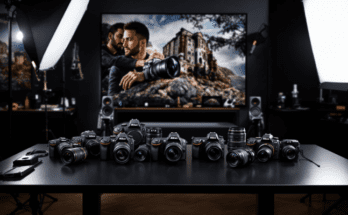Introduction
As you will see while going through the pages of this magazine, photography can be said to be a creative as well as technical process. One of the primary components in the quest for the ideal picture is knowledge of your ISO settings, if not more. ISO, an important factor in photography determines image brightness and the ability of the image sensor to receive light. This article will provide its readers an understanding of ISO settings in cameras, why it is an important aspect of photography, and how to get the best out of it.
Understanding ISO Settings
ISO stands for the international standard for how sensitive a particular film of a camera or Image sensor is to light. A measurement in respect of the extent to which its camera is effective in capturing light in low light environments. The short answer to that question is that, in a nutshell, ISO sets the camera’s film or digital sensor to a light intensity perception. The ISO levels basically indicate the output sensitivity to light for a particular sensor, so as the numbers grow, there is the ability to make pictures in the darkness. However, digital camera noise or grainy image in the captured image is due to high ISO rates.
ISO Values and Ranges
Generally ISO levels in camera are measured from 100 to 6400, while the last digital cameras have 25600 or even more. The ISO values are logarithmic and are based on what the camera uses; each increase in values from ISO 100 means that the sensor’s sensitivity of light has been doubled. For example, increasing from 100 to 200 multiplies it by two and same as increasing from 200 to 400 also multiplies it by two.
Significance of ISO Settings
One reason the ISO values are important for a photograph is because you’re an easy to work under different lighting conditions and circumstances. For example, a shooting at night-time or moving objects needs high ISO levels. There is another side to it, which is that you usually shoot in bright places, so the ISO levels can be set low to get less noise in the photos.
Every photographer must make choices every time he or she wants to choose an ISO value basing it on various factors such as image quality, noise levels and the overall capability of the cameras. Achieving the desired image results will, therefore, be facilitated by the following considerations;
Advantages and Disadvantages for High ISO Levels
The photographers can take pictures with low light and this helps when there is no light to call for and you want to take pictures at night, indoors and when taking any candid a picture without the use of the flash. But these come with its own disadvantages, either image noise or its graininess. At high ISO settings, there can be complications such as a blurring of fine details, a lowering of the overall contrast, and moving of colors.
Noise Reduction Techniques
Although having actually ISO higher than 320 is beneficial, the user must be careful about the noise which occur. To minimize the appearance of noise, photographers can utilize several techniques, including:
1. Using a tripod: In certain cases, such as when shot in low light conditions, tripping your camera will be effective to lessen the shake it creates.
2. Shooting in RAW format: RAW format records more information about the image and most photographers independently manage with ISO after shooting and receive ‘cleaner’ images.
3. Utilizing in-camera noise reduction: A lot of cameras have ‘noise reduction’ settings that one can put-through for subjects captured at high ISOs.
4. Applying noise reduction software: Based on the study, there are a number of noise reduction software applications that can be used to reduce noise in high ISO images.
All You Need to Know about ISO Setting & 4 Useful Pieces of Advice
1. Experiment and learn: To give it a try, you should begin with moving through the ISO adjustments when shooting on a static subject. It will help you make good decisions when shooting and especially if you are in charge of the official photograph .
2. Understand your camera’s capabilities: Education yourself about the range of the ISO on your camera and how well it performs in the high ISO range. This is important since it will enable you understand when it’s appropriate to deploy high ISO settings.
3. Combine ISO with other settings: ISO settings are in combination with shutter speed and aperture (exposure triangle). By understanding how these settings work in tandem, a lot of improvement using the camera can be made.
4. Post-processing: Utilize the editing tools to fix and polish your images and optimize more from the RAW format for the best image results.
Conclusion
The camera POS values, also known as ISO ratings, are another important control factor for the required image and outcome at different lighting conditions. As it is always better to have higher ISO value in low light conditions then, of course, you will get a lot of noise using this setting. Learned photographers can use ISO settings effectively through practice, he or she can try out new things and come up with good result Photographers can now clearly see that iso settings can be a useful tool in the production of beautiful and aesthetically solid picture. As with any sort of layering in photography, it really comes tow to the ability to fine-tune the parameters in play so that great and noise-free pictures can be made.





zeevyk
c5gdwt
p8totc
43f09u
dsze29
k28fvq
9f9s7d
rflj1z
**gl pro**
gl pro is a natural dietary supplement designed to promote balanced blood sugar levels and curb sugar cravings.